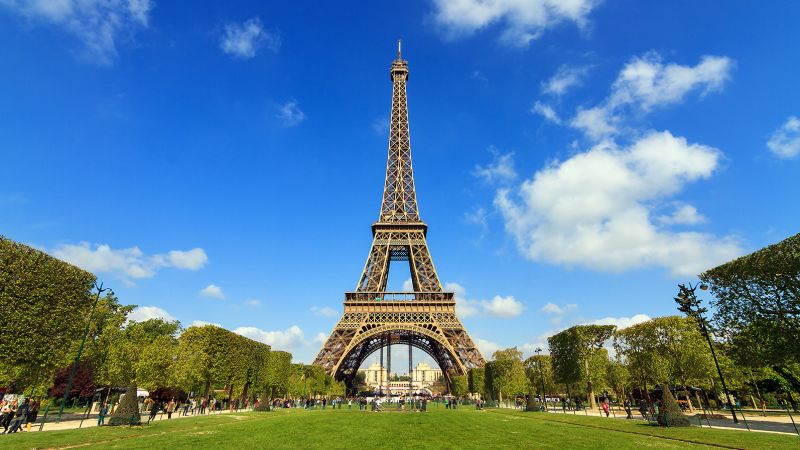
Sign up for Unlocking the World, CNN Travel’s weekly newsletter. Get news about destinations opening, inspiration for future adventures, plus the latest in aviation, food and drink, where to stay and other travel developments.
Paris
CNN
—
Winter is over and thoughts for many travelers will be turning to that most classic of springtime destinations: Paris.
But the City of Lights and many other parts of France are right now convulsing with violence amid days of fiery protests.
So what’s happening, and should travelers hoping to visit one of the world’s most popular destinations change their plans?
Here are some answers to key questions:
Many people are unhappy with President Emmanuel Macron’s pension reform, which will raise the full-pension retirement age from 62 to 64. They’re also angry that he used constitutional powers to push the reform through.
In response, there have been strikes and street protests, some of which have resulted in violent clashes and destruction. This is why you might have seen images of trash piling in the streets of Paris, trains getting canceled across the country or cars burning during protests.
The new law isn’t in force yet, but the leading unions behind the strike action have vowed that demonstrations will continue until Macron cancels his reform.
Paris and most major cities – including Lyon, Marseille, Lille, Bordeaux and Rennes – have been hit by protests.
Unions are announcing countrywide strikes a few days in advance, with the next set for March 28, but in recent days, ad hoc demonstrations have erupted in city centers.
In more rural or smaller destinations, such as along the French Riviera, life goes on pretty much as usual.
Britain’s King Charles made headlines on Friday by canceling his upcoming March 26-29 state visit to France in light of the current unrest.
That said, there has been no official advice from countries such as the UK or US about rethinking travel plans to France.
The UK’s Foreign and Commonwealth Office notes that demonstrations in Paris and other parts of France could turn violent and there could be “disruptions to road travel,” while ongoing strikes could “lead to disruption to services.”
An advisory from the US State Department remains unchanged from October 2022, with France on a “Level 2: Exercise increased caution” status due to the ongoing threat of terrorism and civil unrest.
The UK advisory notes: Around 17 million British nationals visit France every year. Most visits are trouble-free.
Most of the incidents related to the current outrage appear to be relatively isolated, so there’s every possibility travelers can avoid being caught up in them, provided they keep themselves informed of what’s going on.
As always, travelers are advised to make sure they have appropriate insurance cover.

Trash is piling up on the streets of Paris. Here’s why
Most long-haul flights have been unaffected, but there’s been some impact on short-haul European and domestic air traffic.
One recent nationwide strike led to reduced capacity at Orly Airport near Paris, but not Charles de Gaulle, which handles most international flights.
Trains and public transport are where visitors could most feel the effects of the strikes.
On strike days, currently occurring once or twice a week, the Paris Metro is unlikely to run and up to 25% of TGV inter-city high-speed trains are typically canceled.
Cycling and walking remain the best ways to get around Paris, with gridlocked roads on strike days meaning even taxis are inadvisable.
So far, major highways between cities have been unaffected by the strikes and protests.
Most tourist attractions remain open, except on strike days. For instance, both the Eiffel Tower and Versailles were closed during recent national strike days.
It’s worth checking attraction websites before visiting.
While it’s still possible to travel to Paris and have a safe vacation, it’s unlikely that current visits will be unaffected by the ongoing protests – particularly when it comes to transport.
That said, as a vibrant city covering a sprawling Metro area that’s home to more than 11 million people, even during normal times, Paris can deliver the unexpected – good and bad.
Visitors should keep themselves informed with what’s happening where they are and be prepared for unexpected, developing situations.
There are no specific websites detailing strike or protest disruption, but transportation companies are good go-tos for service updates.
– These include RATP for the Paris Metro and regional trains.
– SNCF for intercity trains
– Air France for flights.
For getting about Paris, the Citymapper app seems to have the most up-to-date information on traffic and subway schedules.
It’s too early to tell since the situation is currently constantly changing.

